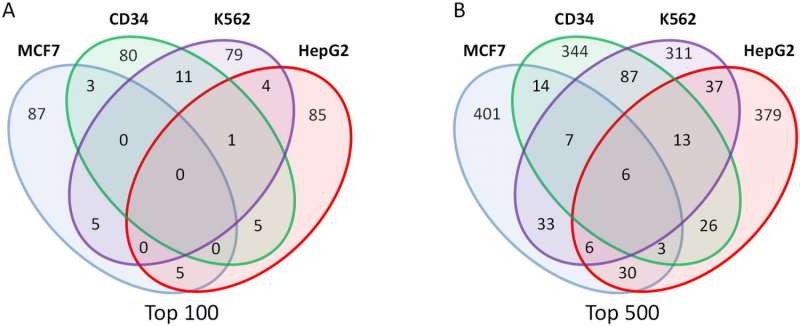Gamma-retroviruses preferentially integrate near cancer-associated genes

Identifying the sites where gamma-retroviruses commonly insert into the genome may help to identify genes associated with specific cancer types, according to a study published April 20, 2016 in the open-access journal PLOS ONE by Kathryn Gilroy at the University of Glasgow, UK, and colleagues.
Gamma-retroviruses, such as feline leukaemia virus, tend to cause mutations when they insert into a host's genome, and have been used as a tool to discover genes associated with cancer. However, this discovery process can be time consuming, requiring the collection of multiple tumors from animals and comparative genomic analyses. The authors of the present study sought to investigate the pattern of gamma-retrovirus insertion using deep sequencing to analyse common insertion sites for feline leukaemia virus in cell culture. The study was also expanded to analyze published genome insertion profiles of other gamma-retroviruses.
The authors found that the gamma-retroviruses preferentially inserted into cancer-driving genes, regardless of transcription levels, in a cell type-specific manner. This authors suggest that gamma-retrovirus integration profiling in vitro may be a tool to identify potential therapeutic target genes in different human cancer types.
More information: Kathryn L. Gilroy et al, Gamma-Retrovirus Integration Marks Cell Type-Specific Cancer Genes: A Novel Profiling Tool in Cancer Genomics, PLOS ONE (2016). DOI: 10.1371/journal.pone.0154070
















